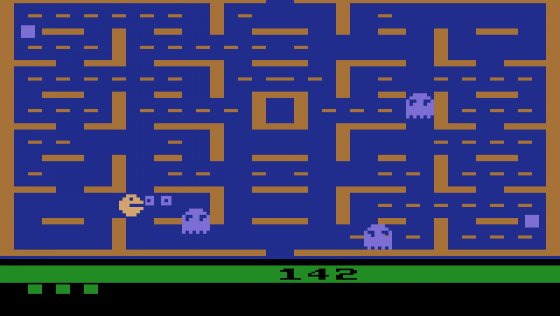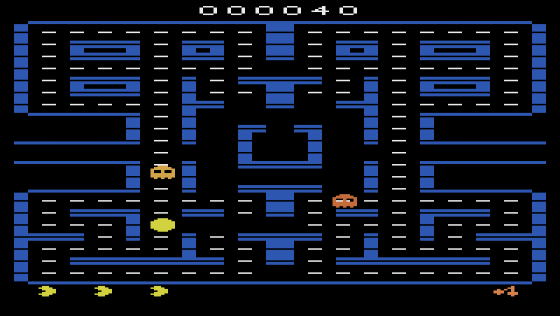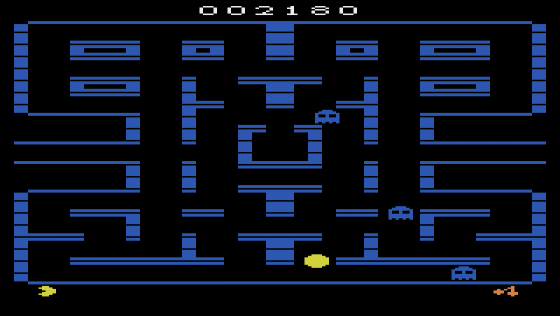Pac-Man
It's the game that brought people into the arcades in droves. Steve Keaton charts the rise and rise of a humble yellow blob that brought a whole new experience to eating
His name is legend, his curse incomparable. He's the little yellow guy with the big mouth who opened the games closet and made joysticks respectable in mixed company. He's Pac-Man, the first arcade superstar! Few games can claim as many offspring.
As Pac-Mania raged, we witnessed the birth of a whole Pac-Family, Pac-Man begat Ms. Pac-Man who in turn begat Baby-Pac and a whole slew of related yellow and blue merchandise. Back in 1981, the world seemed peppered with little white energisers and people walked to a 'wocka-wocka' rhythm (which wasn't easy). Things got totally out of hand.
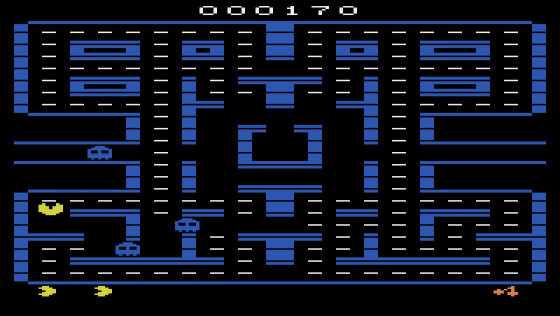
Addicts would wake each morning beneath Pac-Sheets, drink Pac-Tea from a Pac-Mug and then dress in Pac-Apparel. There was even a Pac-Man cartoon show! This proved the final indignity. Upon seeing it, the Pac-Phenomenon promptly pegged out and died. The gaming world was never to see its like again.
Bally Midway originally licensed Pac-Man from little known Nipponese creators, Namco, for introduction to the United States. The weird gobbling game found itself residing amongst banks of straight shoot-'em-ups and surprisingly prospered. Then there was an explosion and Pac-Man rocketed to the top slot of the U.S. Play Meter charts. The game had caught on with a vengeance! Bally churned out over 100,000 Pac-units to sate the demand while unscrupulous rivals equalled that figure with a flood of rip-offs masquerading under such guises as Puck-Man and Gobbler. The market was saturated. Fall-out went global and for nigh on a year Pac-Man ruled the world.
Armchair philosophers pondered its success. The first non-violent video, some pompously declared; an expressionism, squealed others. Both claims were hooey. The little fella was just uniquely playable. A perfect combination of challenge, accessibility and audio-visual harmony. It delighted the senses and tickled the funny bone. There was nothing else like it at the time.

Pac-Man was paced to perfection. The perambulating maze monsters. Blinky, Winky, Pinky and Clyde were all deliciously geared. They begin at a sluggish pace and then speed up. Soon both Pac and monsters are travelling at the same speed, but survive too long and the Pac runs out of puff. Infuriating!
The monsters/periods of edibility undulate in a similar fashion. Beginning at about seven seconds, they dwindle to two, then rise to five and then, after a brief respite, all but vanish. And just as you think your wrist will snap under the pressure, there's an intermission to break the tension.
It was also predictable. Amongst the debris I laughingly refer to as my studio, I have diagrams which would ensure total success over any screen. I never use them. Why spoil a brilliant game? I felt the same about the PEEKS and POKES for Manic Miner. Others, though, had fewer scruples and Pac-Masters appeared in every arcade. You'd often see a queue of tireless individuals who, for a couple of coins, could hog a machine for a weekend. Million-plus players!
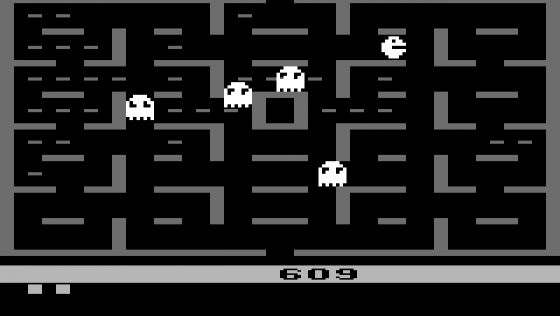
To combat this new breed of punter, arcade owners set about the game with chainsaws. Clumsy brain surgery on the PCB resulted in the easier sheets being all but eliminated. Some machines simply crashed at strategic points. Disgruntled, I left the arcades and waited for the little fella to come home.
It was a long wait. Atari trumpted the arrival of an officially licensed VCS ROM and then blew it in spectacular fashion. To this day it remains their worst-ever arcade conversion, sparking off hoots of derision whenever mentioned. Any similarities between it and the Midway monster are clearly unintentional! The familiar maze went out the window, as did the cast of monsters and bonus treats (also known as 'Pac-Lunches'). It looked awful and played ever worse. Despite eight game variations only one was anywhere near acceptable and even that quickly became a doddle. Pac-Fans could hardly believe their (bad) luck.
The company later redeemed themselves with a far more convincing conversion for their 400/800 computer range, restoring the missing features and improving the gameplay, but cynicism was rife. By way of an apology Atari converted Ms. Pac-Man to the VCS with much greater effect. Curiously history repeated itself with the launch of the Atarisoft range. Once again Pac-Man was set up as a figurehead and once again Atari fumbled the ball. Their Spectrum version was almost as big a turkey as the earlier VCS ROM. "Our big mistake was going for 16K," a spokesman was heard to moan. Realising their mistake Atari once again turned their attention to Ms. Pac-Man. The as yet unreleased (48K) Spectrum conversion is brilliant. Unfortunately the damage has been done. No-one wants to know any more. If the Pac-Family moved in next door, most people would up and sell.
The little yellow guy still hangs on in the arcades though. Battered Pac-Men can be seen propping up the walls in seedy game parlours, like video winos. Few survive in their original cabinets and most boast duff joysticks and arthritic response times. A sad state of affairs. Newer visitors, stumbling over the old fella doubtless wonder.


 23rd July 1984
23rd July 1984

